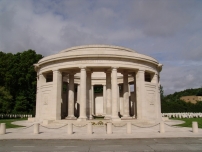| First Name: | Harold Cecil | Last Name: | COTTER | |
|---|---|---|---|---|
| Date of Death: | 10/04/1918 | Lived/Born In: | Knightsbridge | |
| Rank: | Second Lieutenant | Unit: | Lancashire Fusiliers11 | |
| Memorial Site: | Ploegsteert Memorial, Belgium | |||
Current Information:Age-19 5, Cottage Place, Brompton Square, Knightsbridge
In the Spring and early summer of 1918, the Germans launched four major offensives against the Allied line in France and Belgium which came close to ending the war in their favour. This was made possible by the end of the fighting on the eastern front after the Russian revolution, which allowed the German Army to bring its troops from there to France, where it was hoped a decisive effort would win the war in their favour before the Americans arrived in force. The Germans very nearly succeeded with their attacks. Their new tactics of a intense artillery barrage followed by groups of specially trained storm troopers forging swiftly ahead, by-passing any strongpoints, caused chaos among the defenders and remarkable gains in territory were initially seen. The old system of trench warfare soon became a thing of the past. But in each case the Germans over extended themselves and without adequate supplies keeping up with their rapid advances, they could go no further. By late summer, the Germans were exhausted, the Allies had regrouped and were then able to begin their own series of offensives which led to the collapse of the German Army and victory before the end of the year. After the failure of their first offensive, Operation Michael, the Germans tried again but this time further north. On 9th April they launched Operation Georgette on the seventeen miles of front running between the La Bassée canal and Houplines, just to the north of Armentières. Their powerful artillery had been moved north and was in place to unleash its full fury on the British positions with seventeen fresh divisions then attacking against five British divisions, four of whom had been sent here to recover after receiving a mauling during Operation Michael. In the centre of the allied line was the weak and largely demoralised 2nd Portuguese division in the Laventie sector whose relief was well overdue. At 4.15am on 9th April the German artillery barrage opened up and at 8.45am their infantry, again assisted by thick mist, attacked. They sent four divisions against the Portuguese and the front line here simply crumbled as the defenders fell back in disarray leaving a large gap for the enemy to exploit. Just to the north of the 2nd Portuguese battalion stood 40th Division who were severely affected by the breakthrough on their right. Their forward battalions were cut off and were virtually destroyed while the rest fell back and tried to form a defensive line along the River Lys. 119 Brigade found themselves under extreme pressure here and 74 Brigade the reserve brigade of 25th Division, which was holding the line north of Armentières, were sent from Steenwerck to Bac St Maur to assist them. At 6pm, when half way there, they learned that Bac St Maur had already fallen as the beleaguered 119 Brigade of 40th Division gave way. Between them the two brigades planned a counter attack which commenced at 7pm when the centre battalion of 74 Brigade, 11th Lancashire Fusiliers, sent directly against Bac St Maur was stopped by enemy fire. A second attempt at 8.30pm, with 9th Loyal North Lancashire assisting on their right, regained only a small amount of land but a third attack at 2am on 10th April recaptured the village. There was a price to be paid in casualties however and one of these was Harold Cotter of 11th Lancashire Fusiliers. After close range fighting all day there was now a thin defensive line round the great pocket, ten miles wide and five and a half miles deep, that the enemy had made in the front. However this line was not going to be able to withhold the German offensive for long. |
||||
| « Back to Search Results | ||||
| If you think any of the information shown here is incorrect, Click Here to submit your amends and comments | ||||




